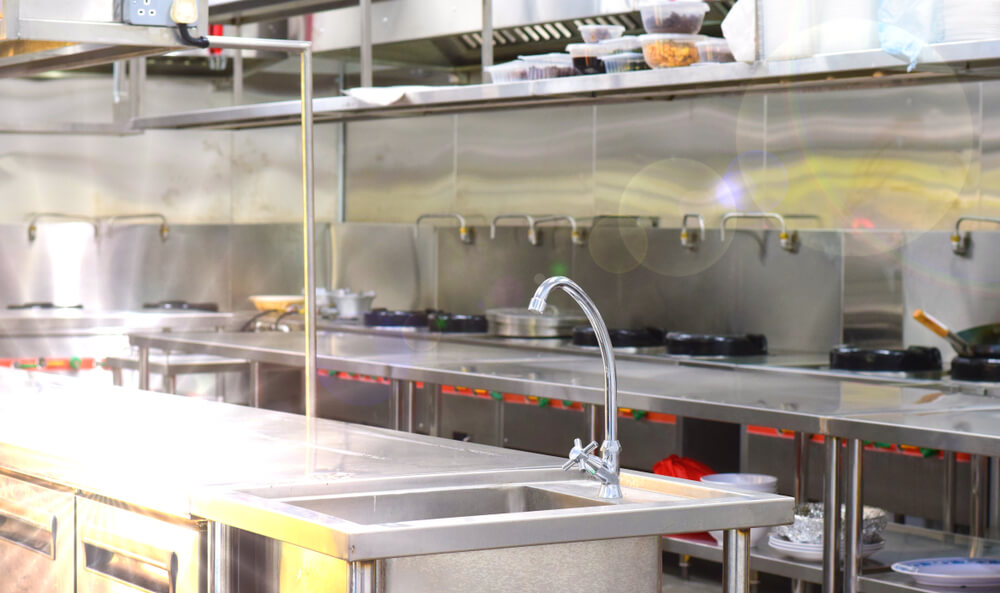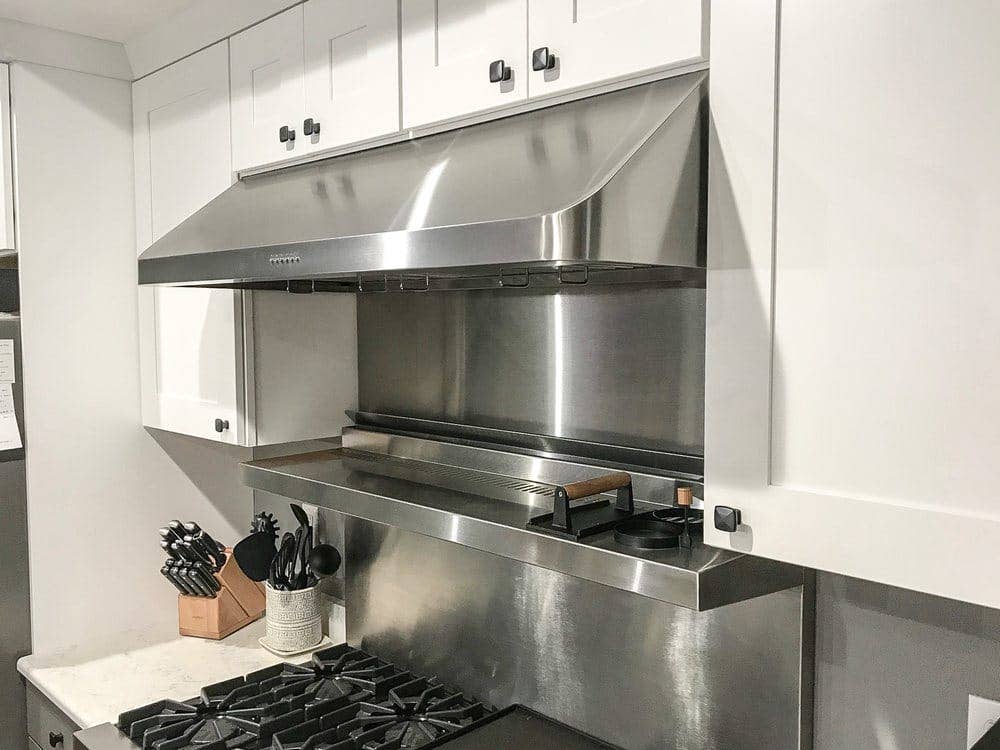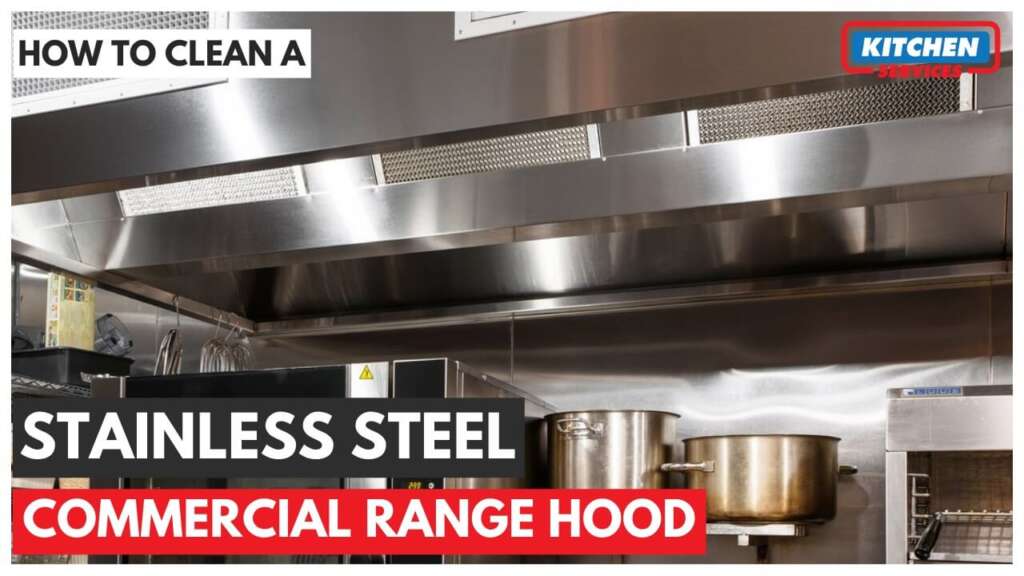A Stainless Steel Commercial Range Hood is very durable. It is also very beautiful as long as it is kept clean. This can be a challenge, but if you have the right method of keeping up with it, your stainless steel range hood will stay looking new. Not just in your commercial kitchen but in our homes as well all the stainless-steel appliances look and feel great while you work with them.
They are smooth, and their matte finish always gives your kitchen a glossy and expensive form also its non-porous surface is repellent to any sort of bacterial growth which then adds to its overall appeal. Along with that, stainless steel is also well known for being hardy and anti-rust even though daily wear and tear, making it a perfect choice for most modern commercial kitchens. Nevertheless, that does not mean that any sort of rust, stains, and damage can never happen to your appliances. Many of these stainless-steel appliances have a protective film and if they are scratched in any way, they will leave the steel underneath vulnerable to damage from chemicals, water, and rough surfaces. You must be worried about maintaining your beautiful shiny stainless steel kitchen appliances, but you must not because all it takes are a few tips to remember and these hacks to keep them bright and clean as they are newly installed.
3 Easy Steps for Commercial Hood Cleaning

Do you want to know how to clean a stainless-steel commercial range hood? Did you ever wonder how long it will take or how you must start with the cleaning process? Well, it is not as hard as you might think it is. We shall show you three different methods in order to clean everything on your stainless-steel range hood, from a little dust to the strongest stains.
1. Everyday Cleaning
All You Need is
- Any of these three cleaners: Windex, 1:1 vinegar and water solution, mild dish soap, and water
- Microfiber cloth
Procedure
- You may use the basic glass cleaner in order to do any light or regular cleaning, such as cleaning fingerprints from your hoods. You can purchase any glass cleaner, or you can save some of the money and easily make your own cleaner at your kitchen.
- You can combine one part water and one part vinegar in any of your spray bottles. You can simply spray your glass cleaner on the range hood then you can wipe it off with a microfiber cloth in the same direction as the grain.
- Another option that you have for any regular cleaning is to mix warm water and a bit of mild dish shampoo. You can then scrub the range hood with a soft sponge or microfiber cloth as well.
- After scrubbing it properly, you should rinse the soapy water off thoroughly with clean water.
- Then, make sure to wipe it entirely dry so you aren’t left with water spots on your stainless steel hoods.
2. Hard to Clean Areas
All You Need is
- Acetone or kitchen degreaser
- Microfiber cloth
- Any mild dish soap and water
- Dry cloth
Procedure
- In order to remove hard oily spots and pastes, all you need is a stronger product such as acetone, which is also the key ingredient in nail polish remover and paint thinners as well.
- Remember to open the window of your kitchen before using acetone in order to circulate the air properly.
- Then you will have to wet your cloth with the acetone and, going with the grain, start scrubbing the areas that have a thick layer of grease.
- Wipe off all the cleaners and continue to perform these steps again until the greasy areas have been removed completely.
- Once you clean all the areas with built-up oils, use a soft cloth with a mixture of warm water and mild dish soap to remove the acetone and greasy residue that is left.
- After that, you will have to rinse the soapy water off with clean water and dry it off instantly with the help of a clean towel.
- You can also use a kitchen degreaser. You can spray on the degreaser and allow it to sit and work for about 15 minutes.
- After that, rinse all the cleaner off with warm water and wipe the hood dry with a microfiber cloth.
3. Most Difficult Stains
All You Need is
- No grit Soft Scrub
- White scotch Brite pad
- Any old toothbrush
- Microfiber cloth
Procedure
- If you see any extraordinarily tenacious spot that does not go off with the methods that are mentioned above in this article, you can always try a Soft Scrub cleaner without using bleach.
- You can also use a white scotch Brite pad to break down tough grease stains. It is one of the lightest pads which is ideal for dissolving difficult stains without scratching the hood.
- After that, you may apply the Soft Scrub to the cleaning pad and start wiping your stainless steel range hood with long strokes back and forth in the same direction as the grain.
- If you require a more focused scrubbing tool, an old and used soft-bristled toothbrush will do the job for you.
- Always be careful about wiping all the cleaner off carefully once you are done scrubbing it properly.
What to avoid while cleaning Stainless Steel Commercial Range Hood

- Always avoid using jewelry polish which contains chemicals that can be corrosive to stainless steel.
- Avoid using any product that contains chlorine or chlorine bleach.
- Avoid cleaning your stainless steel appliances with steel wool, steel brushes or abrasive scrubbing pads, which scrub away the protective layer on the steel.
- Try not to clean your stainless steel appliance when it is hot or warm, but wait until it’s cool to your touch.
- Do not use any sort of bleach or harsh cleaners while cleaning your stainless steel hoods. Even though stainless steel is known for its stability, it is still possible that you may damage it with the use of harsh chemicals and scouring pads.
- Some harsh chemicals such as those that are used in oven cleaners may result in discoloration of your hoods.
- Coarse sponges, steel wool, and wire brushes may scratch a brushed stainless steel finish as well.
- Remember to always scrub in the same direction as of the grain on the brushed finish. This grain indicates to the faint directional lines that is running through the metal. You will observe them if you look closely.
- If you wipe against the grain, it can leave deposits behind in the small cracks of the stainless steel. This may also scratch the finish.
- Scrubbing with the grain, though, will help you preserve the beautiful finish of the stainless steel.
In Summary
Confidently, one of these listed methods will work best for Stainless Steel Commercial Range Hood cleaning. You must always remember that for everyday cleaning purposes, you should prefer using a glass cleaner, a mixture of vinegar and water, or any mild dish soap and water. In order to break down some tough grease, use can always use a kitchen degreaser or acetone. And, for the hardest stains, try a no-grit Soft Scrub. With the use of all of these methods, if you want to do it again in a better way, you can always try one or two drops of olive oil or coconut oil on your polishing cloth and rub in the direction of the grain after you are done with the cleaning. Polishing with a bit of oil can restore the stainless steel to its nice shiny finish and it will help in avoiding streaks as well. Always make sure not to use too much oil or you will end up with a sticky mess.
There is a possibility that some parts of your range hood may have stainless-steel grain that is going in the opposite direction. You can check it by running your finger across the range hood to figure out the exact direction of the grain. If you come across some resistance, it means that you are moving against the grain. Cleaning your range hood is a very important part of keeping it looking good and keeping your kitchen smelling fresh as well. How often you need to clean your hood totally depends on your cooking habits and how much is that kitchen is in use. On average, range hoods may need a daily to weekly basic cleaning and a more thorough cleaning once every month or at least two. The more you clean your range hood, the less you will have to deal with harsh stains and heavy grease build-ups. As long as you follow all these methods properly, your stainless steel range hood will look good as new.

